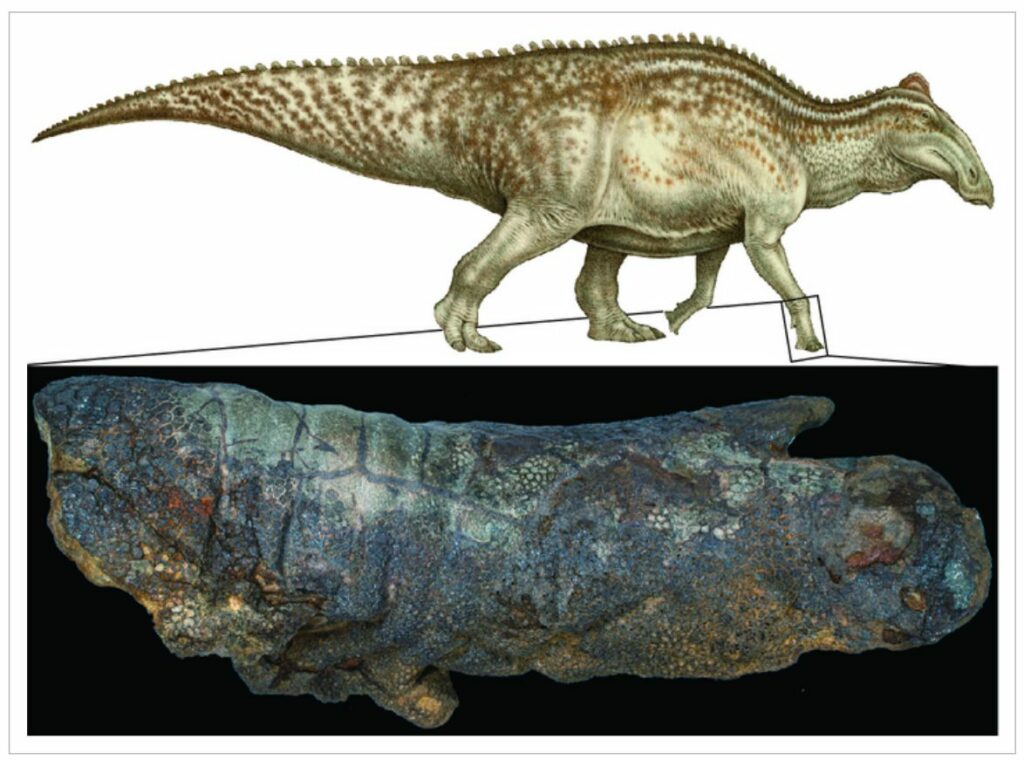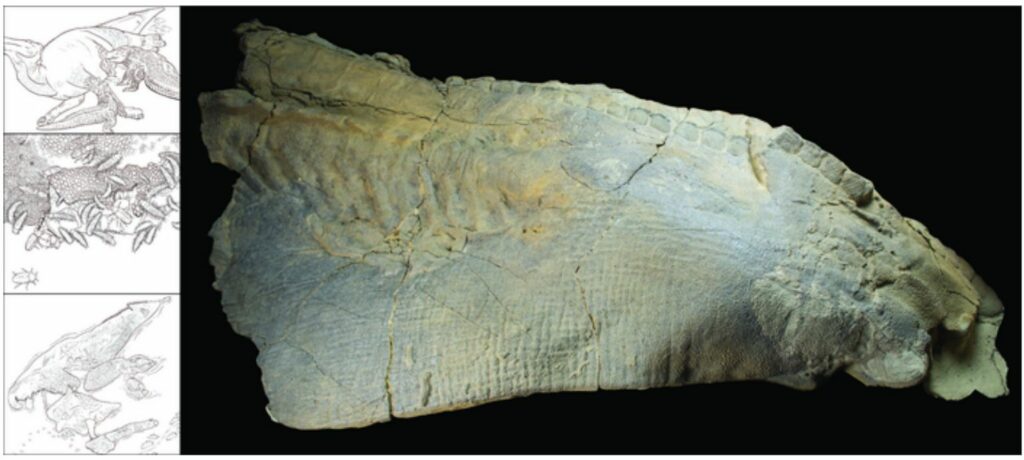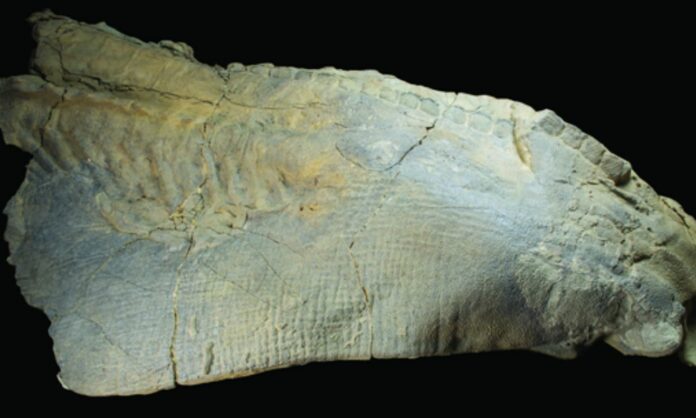The preservation of dinosaur skin in fossilized ‘dino-mummies’ may be far more common than previously believed due to the possibility that scavengers eat the soft inside tissues that allow microbes to grow and decompose the body.
“Mummy” refers to uncommon dinosaur fossils having preserved skin.
It is generally accepted that skin fossils are incredibly rare and that a carcass must be fast-buried and/or desiccated in order to protect it from scavengers and decay.
Drumheller and coworkers suggest a new explanation for the formation of such “mummies” by combining fossil evidence with observations on present animal carcasses.
The researchers looked at a fossil of a dinosaur from North Dakota called Edmontosaurus. The fossil shows large patches of dry, flattened skin on the limbs and tail.

On the dinosaur’s skin, they found bite marks from animals that ate meat. These are the first fossil dinosaur skins that show damage from carnivores that haven’t healed. This also shows that the dinosaur body wasn’t protected from scavengers, but it still turned into a mummy.
It is well known that scavengers and decomposers sometimes strip modern animal carcasses of their internal tissues, leaving behind only skin and bone.

The authors hypothesize that the damage to this dinosaur’s skin caused by this incomplete scavenging would have exposed its insides and allowed a similar process to continue, after which the skin and bones would have become slowly dried and buried.
This process, which the authors refer to as “desiccation and deflation,” is typical of modern corpses and explains how dinosaur mummies might have formed in conditions that are considered to be relatively usual.
The authors underline that the possible origins of a dinosaur mummy are likely to be multifaceted. Understanding these mechanisms would help paleontologists better gather and analyze such valuable fossils.
“Not only has Dakota taught us that durable soft tissues like skin can be preserved on partially scavenged carcasses,” adds Clint Boyd, Senior Paleontologist at the North Dakota Geological Survey, “but these soft tissues can also provide a unique source of information about the other animals that interacted with a carcass after death.”
You were reading: Dinosaur “Mummies” Are Not As Rare As We Think
